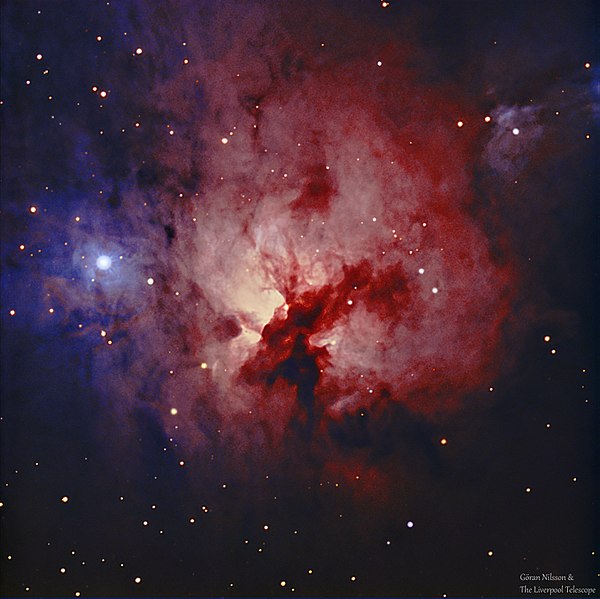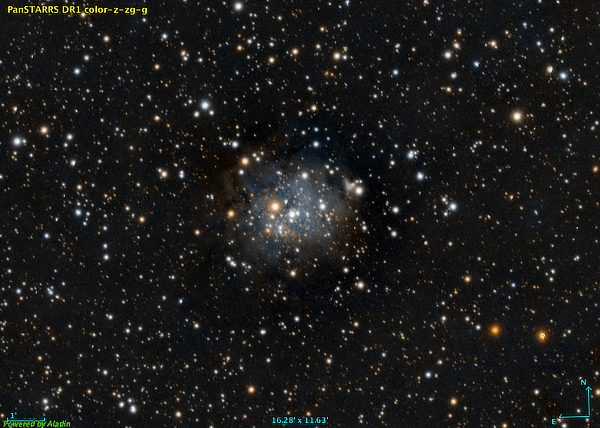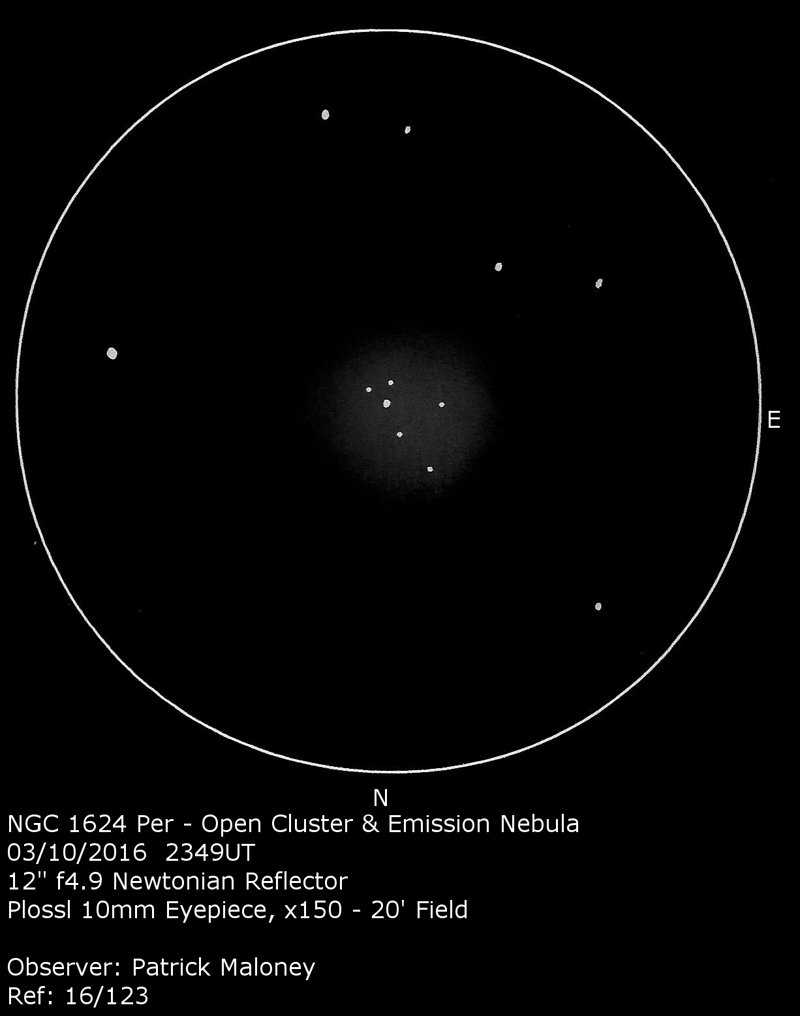More nebulosity in Perseus
December 2021 - Nebula and Cluster of the Month
This month, we’re going to take a look at two overlooked objects in the constellation of Perseus. Perseus has its fair share of spectacular clusters and nebulae. Big splashy clusters like M34 and the Double Cluster (NGCs 869 and 884) make for spectacular views, and big nebulae like NGC 1499, (the so-called ‘California Nebula’), which it has been said can be seen from a dark-sky site with the naked eye and an OIII filter. I haven’t tried, but I’d welcome responses from anyone who has.
Moving away from these headline objects, I’d like to show you two other objects, both visible in modest telescopes given dark enough skies, and both worth a moment of your time.
This month’s nebula is NGC 1579, a small reflection nebula in the southwest of the constellation. Discovered on 27 December 1788 by the ubiquitous discoverer of deep-sky objects, William Herschel. He described it thus: Considerably bright, considerably large, much brighter in the middle. Stands nearly in the centre of a trapezium.

This would seem to be an opportune moment to discuss what a ‘reflection nebula’ actually is. As the name suggests, reflection nebulae do not shine by their own light, like emission nebulae or planetary nebulae. All the light that we receive from reflection nebulae is provided by a nearby star (or stars). The nebula itself is a cloud of gaseous matter and dust grains that lies near a star. The proximity to a star is often because they are related to each other, as here, but sometimes the association is coincidental, as in the case of the nebulosity around the Pleiades. The stars that provide the illumination for these clouds are typically hot, energetic young O- or B-type stars, suggesting that the nebula is in some way associated with the creation of the star. The dust grains in the clouds turn out to have an astonishingly high albedo, probably 60–70%, much the same as a fresh fall of snow. For comparison, the albedo of the Moon is about 12%.
Visually, reflection nebulae very often are a mix of bright and dark nebular regions. The dark patches and lanes are the same stuff as the bright areas but are closer to us than the illuminating star, so we see the dark, unilluminated side.
NGC 1579 is a fine example of a reflection nebula with multiple dark lanes. Through the telescope, it presents as a large, bright, wide fan of nebulosity. It is brightest at its apex, where there is a considerably brighter, almost triangular patch. Two of the stars of Herschel’s trapezium are nice doubles.

Just over 15° north of NGC 1579, in the northeast corner of Perseus, lies another overlooked but interesting object. This is NGC 1624, a very young open cluster within a small emission nebula. Unlike reflection nebulae, emission nebulae shine by their own light, produced by ionized gas within the nebula which is in turn excited by high-energy ultraviolet light from nearby stars, in this case the young open cluster embedded within it.

This is again a discovery of William Herschel. He found it on 28th December 1789, when he wrote Six or seven small stars, with faint nebulosity between them, of considerable extent and of an irregular figure
. He placed it in his fifth class of objects, ‘large nebulae’, not in one of his classes of open clusters. The cluster is very sparse, I recorded six stars when I observed it. Whilst Herschel described the nebulosity as being of an irregular figure
, to me it looked almost round, and images of the object also bear this out. The nebulosity is brightest at the centre, where the stars are.
According to Archinal & Hynes, the open cluster has a Trumpler classification of II1p n, indicating that it is detached with little central condensation, most of the stars are of about the same brightness, it contains fewer than fifty stars and is associated with nebulosity. Other sources give a Trumpler classification of I2p n, indicating a high concentration (though with only half a dozen stars, this is hard to be precise about), and a moderate variation in the magnitudes of the member stars. I would tend to agree with this latter point. When I observed the cluster, I estimated its stars to range from around magnitude 11.5 to around 13.5. The overall visual magnitude of the cluster is given by Archinal & Hynes as 11.8, which is close to the magnitude of its brightest star.
The cluster is estimated to be less than four million years old and to lie at a distance of about 20,000 light-years.

The nebulosity in which the cluster is embedded is not bright but was clearly visible to me through a 12” (300mm) reflector from a light-polluted site under less than ideal conditions. Under dark skies, this would be a really lovely object. I invite you to look at it.
I would like to take this opportunity to wish you all well in whatever way you celebrate midwinter.
Patrick Maloney (DeepSkyBagger@gmail.com)
| Object | RA | Dec | Type | Magnitude |
|---|---|---|---|---|
| NGC 1579 | 04h 30m 11s | +35° 16’ 53” | Reflection nebula | - |
| NGC 1624 | 04h 40m 37s | +50° 27’ 42” | Open cluster and emission nebula | 11.5 |